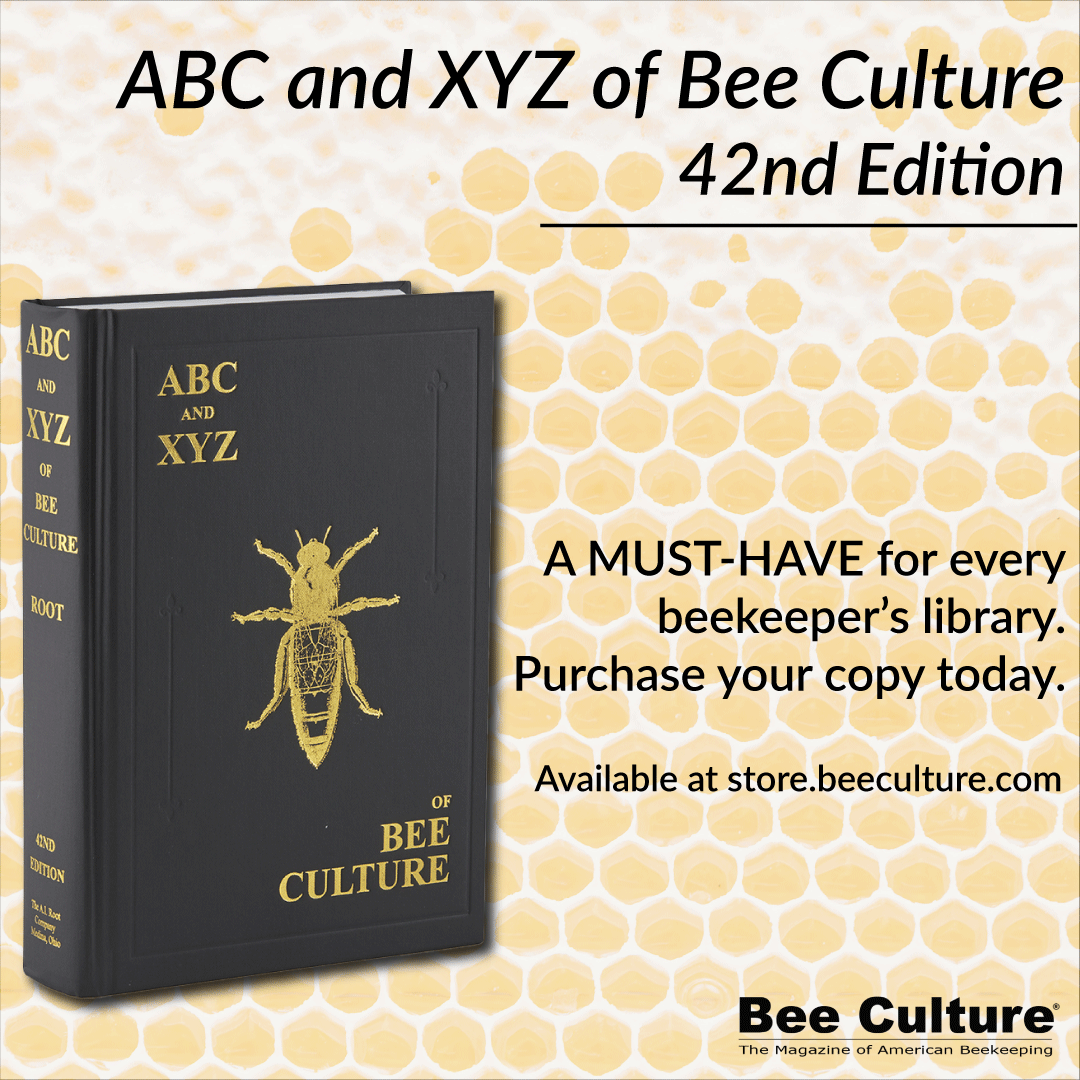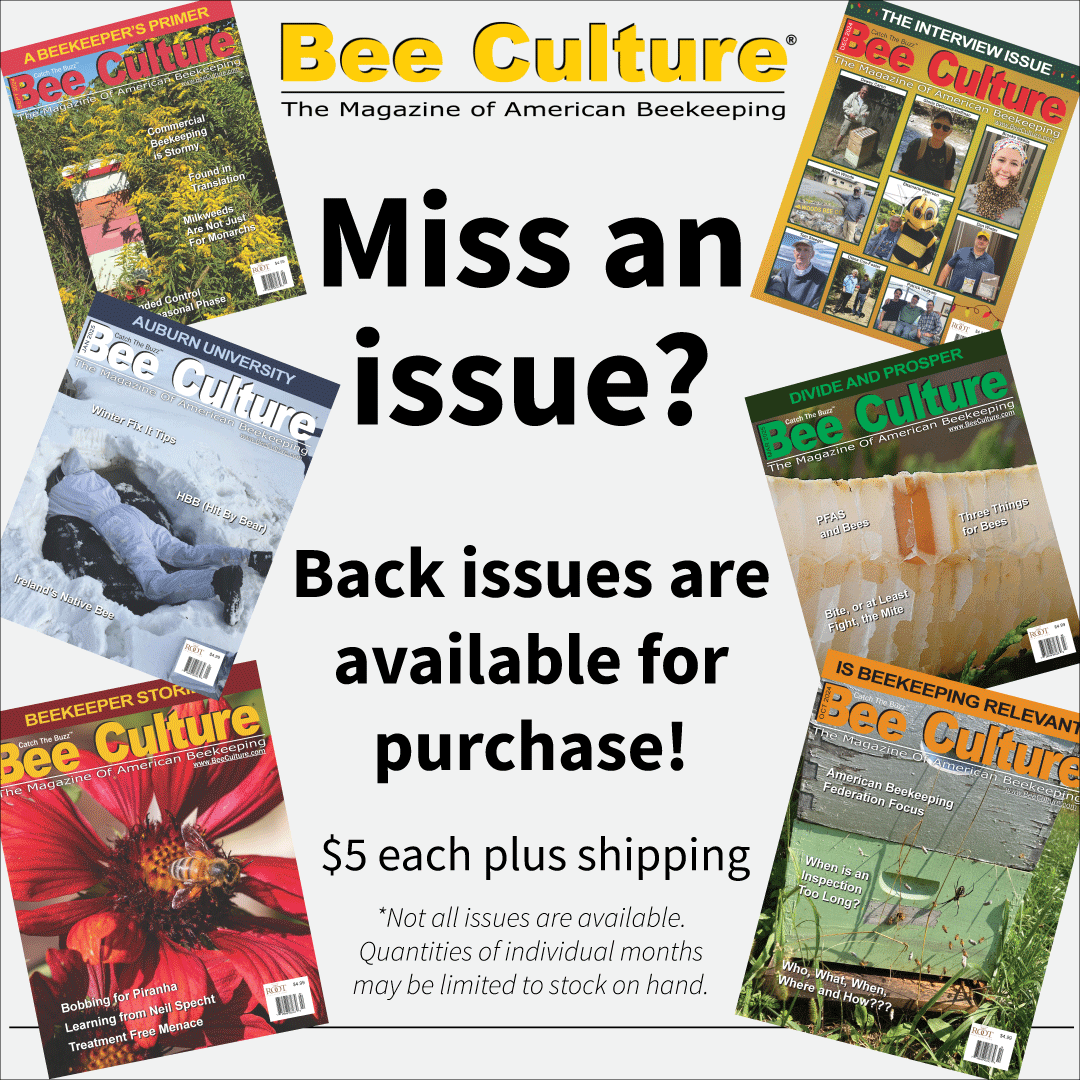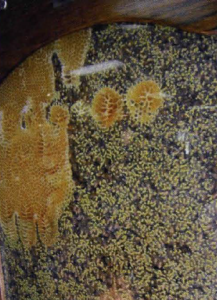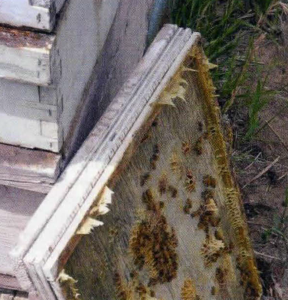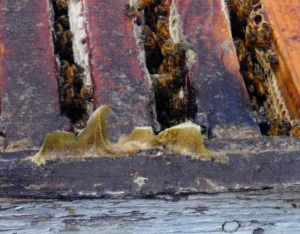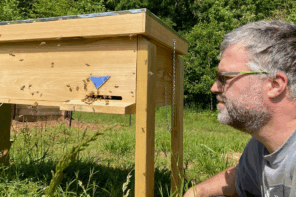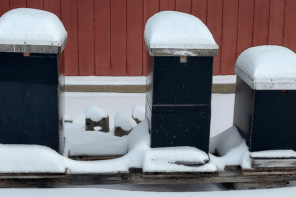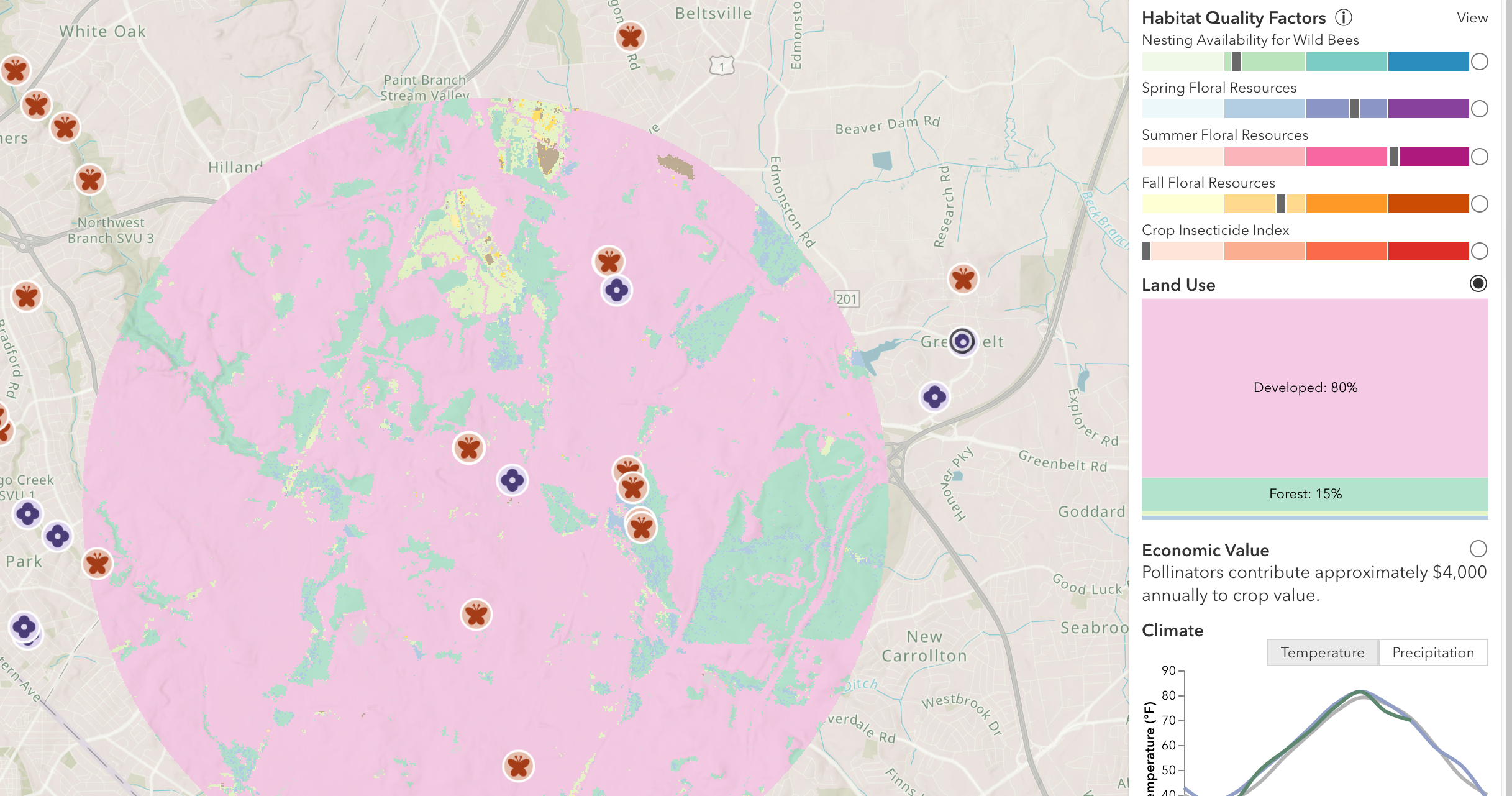By: Roy Hendrickson
This article originally appeared in the Summer 2016 issue of BEEKeeping Your First Three Years
The bee space was the discovery by the Rev. L. L. Langstroth that made moveable frame beekeeping possible. Through patient observation Langstroth discovered that a separation of approximately one quarter to three eights of an inch prevented the bees from filling the gaps with either propolis or wax. The development of the moveable frame hive followed shortly thereafter.
In practice, the bees will seal any open space narrower than one quarter of an inch with propolis. When you attempt to remove a frame or separate hive bodies, you’ll find that everything has been glued together making the task at hand much more difficult. Conversely, any opening wider than three eights of an inch will encourage the construction of burr comb, comb that is often filled with drone brood during the Spring and early Summer buildup period.
The most common cause of bee space abuse is improperly built woodenware, not all equipment manufacturers build to the same exact specifications. When you interchange frames and hive bodies from different manufacturers bee space abuse often results. For example, I’ve seen tolerances for hive body depth vary by a quarter inch or more. The depth of the rabbit or frame rest, and that of a deep frame can also vary between manufacturers. When hive bodies and their corresponding brood frames aren’t in sync, the resulting bee space abuse can turn deadly. The burr comb that is built between top bars of the lower hive body and the bottom bars of the upper hive body is a potential death trap for queens. Every time you remove a brood frame or raise the upper brood box, you run the risk of crushing the queen upon reassembly. And it’s virtually impossible to know that anything is amiss.
Another classic example of bee space abuse is found in the commercially manufactured inner cover. For manufacturing simplicity most commercial inner covers have a raised border on both sides. Regardless of which side is turned down, the resulting bee space is incorrect, often by as much as a quarter of an inch. Ever wonder why the bees build burr comb between the top bars and the inner cover? In good crop years it can become virtually impossible to remove the inner cover due to the excessive buildup of burr comb.
Prevention is by far and away the simplest solution to the bee space issue. Compare before you buy. If you plan on purchasing hive parts from more than one manufacturer, request or purchase samples and check the measurements before you buy in quantity. Next time you attend a bee meeting take a ruler and compare the differences between the products on display. I’m hesitant to recommend specific products, but I noticed at the recent OSBA meeting that Brushy Mountain had an acceptable inner cover on display, i.e. one side of the cover was almost flat. And the cover appeared to be built to last. That’s not often the case with commercial inner covers. With existing equipment your only option is remanufacture the boxes. It’s far more important to have the correct bee space in the brood nest than in the supers. In a good honey flow year burr comb in the supers is almost unavoidable no matter how accurate the bee space. If the bee space is too large, (the most common type of abuse) use a table saw to cut the excess off the bottoms of your hive bodies or supers to conform to the size of the existing frames. If the spacing between the upper and lower brood boxes is such that the brood frames are glued together, add an appropriate sized strip of wood to the bottom edges of each brood box to achieve the correct spacing. Generally speaking, I’ve found that deep brood boxes with a standard 5/8th inch rabbit will have the correct bee space if the box is 9 ½ inches deep, give or take a 16th of an inch.
Nectar on the Backside
Contrary to popular belief honey flows don’t necessarily commence with the onset of a specific honey plant bloom. Black Locust is perhaps one of the best examples of this phenomenon. Inclement weather aside, early in the blooming sequence abundant bloom but a total absence of foragers is a very common, almost routine occurrence. A check of colony flight activity or the for the presence of incoming nectar will usually confirm the visual observation, no flow in progress. However, once the bloom reaches mid-stage and beyond, incoming nectar becomes plentiful as evidenced by flight activity and work in the supers. I’ve seen locust bloom that has started to turn brown, yet the bees were working at a feverish pace to collect the crop.
Unlike the black locust, the bloom of the basswood tree, more specifically the Native American Basswood (Tilia Americanus) doesn’t open all at once. The blooming sequence is often spread out over a week or more. Quite often the earliest blossoms are starting to fade just as the last blossoms are starting to open. Rarely do the bees work the newest bloom, they much prefer older blossoms. In extremely hot weather everything is compressed, but under normal conditions the older blossoms are king. At least that seems to be the norm in this area. I’ve observed similar scenarios albeit to a slightly lesser degree with blackberry, one of the seasons first honey plants, and with goldenrod, generally the last major bloom of the season. In general the bees tend to concentrate on the older blossoms.
Goldenrod is a very interesting honey plant. There are over a hundred different varieties, with only a small number occurring in any given area. Locally the earliest goldenrods start to bloom in mid-late July. These early varieties don’t produce any pollen or nectar; as a result there isn’t any bee visitation. The first sign of bee activity begins with the arrival of bright yellow goldenrod pollen in the latter half of August. The first scent of fresh nectar very reliably occurs around the 26-28th of the month. However, the main flow, if the weather cooperates, rarely occurs prior to the 8-l0th of September. And it’s rare indeed if the flow persists past the 21st of the month. Perhaps most interesting of all, the varieties that produce the bulk of any surplus have barely reached the early bud stage when the first blooms appeared in mid-July.
Northeastern Ohio Bear Alert
Intermittent bear problems have been an ongoing problem in this area for the past fifteen to twenty years. As a rule mother bears kick the young males out by the end of their second year. Our previous bear issues have generally involved young males reared in Pennsylvania, who when looking for a mate headed in the wrong direction. Occasionally these wandering juveniles would
stumble across a beehive and create a minor degree of havoc. Dislodged covers, or the occasional tipped over colony were the usual end result. Rarely were colonies completely destroyed.
That is no longer the case. Today’s problem bears are full time residents, and the mischievous behavior is rapidly becoming past tense. Bears like any other animal need a reliable food supply, and beehives are a treasure trove once their ingredients are fully understood. Today is December 6th and I just finished moving a small bee yard (eight colonies) because the ninth colony, the most productive, had been completely destroyed. Unknown to me a couple of neighboring colonies had suffered the same fate a couple of days earlier. Initially I considered installing an electric fence, but that’s not a twenty minute process, and I didn’t want to risk losing a couple more colonies during the interval. So I opted to move the colonies to another location with a pre-existing bear fence.
If you’re located in an area that is subject to occasional black bear depredation don’t wait until it’s too late. It’s much easier to prevent bear problems than it is to rectify an ongoing issue. If your bees are located close to an established electrical source I recommend a plug in fence charger. There’re generally the cheapest and most reliable. If not, then either a solar or battery operated charger is required. Acquire a decent charger, something with an output of at least one Joule. (A Joule is an international power rating) And make sure to install an adequate grounding system, especially if your soil trends toward the sandy or loamy side. This is truly a situation where “an ounce of prevention is worth many pounds of cure”!
Roy Hendrickson a 40 year beekeeper from Northeast Ohio. He writes for many bee journals and is active in the Ohio State Beekeepers Association.






